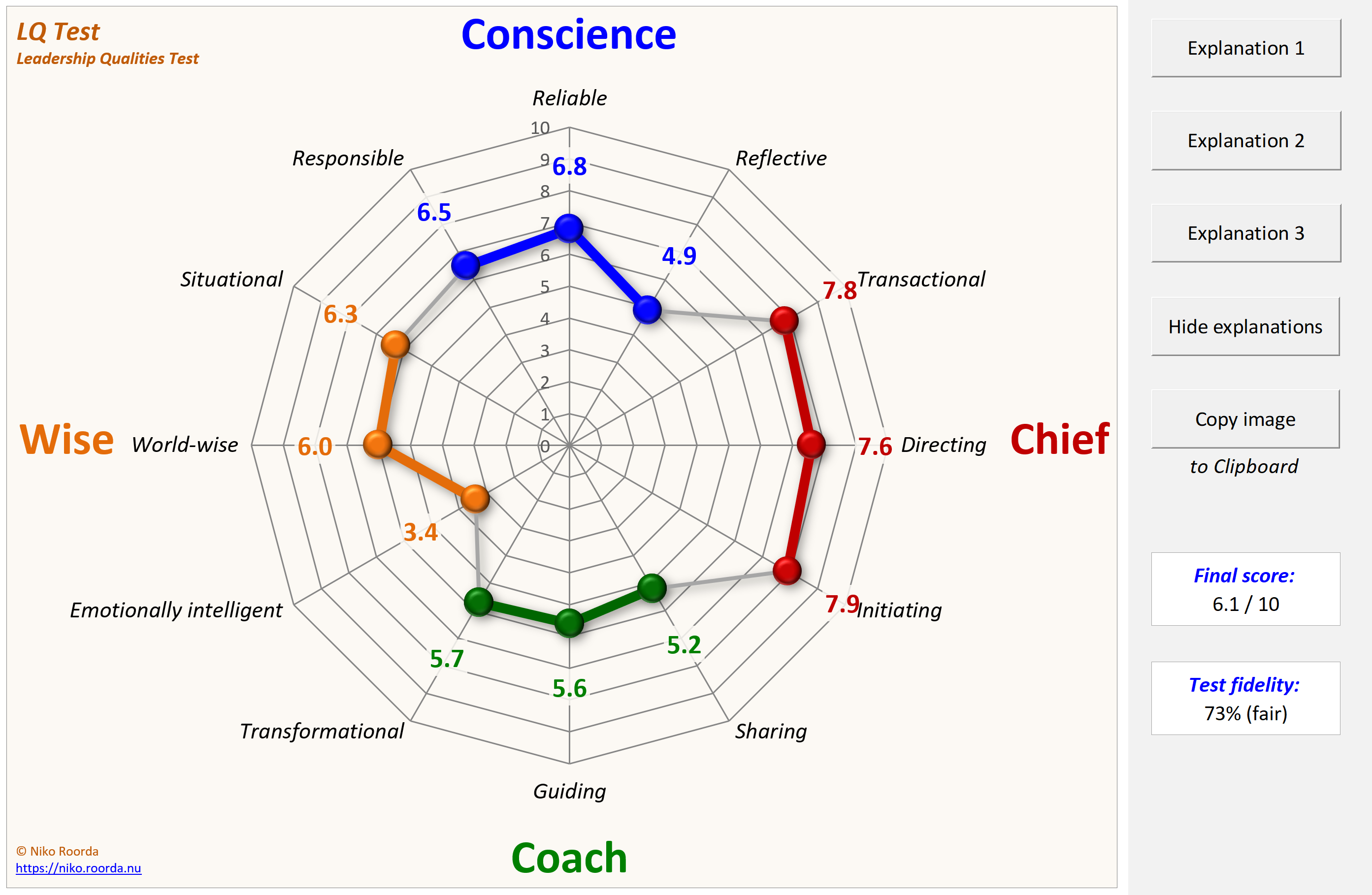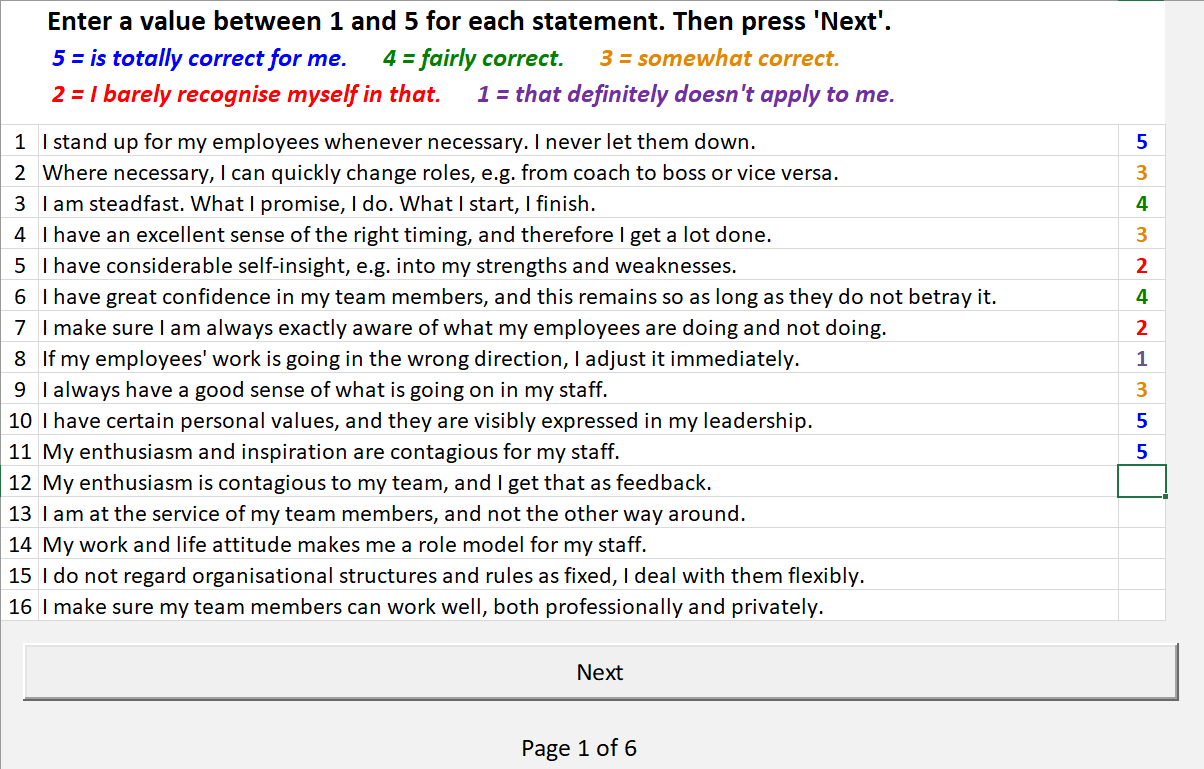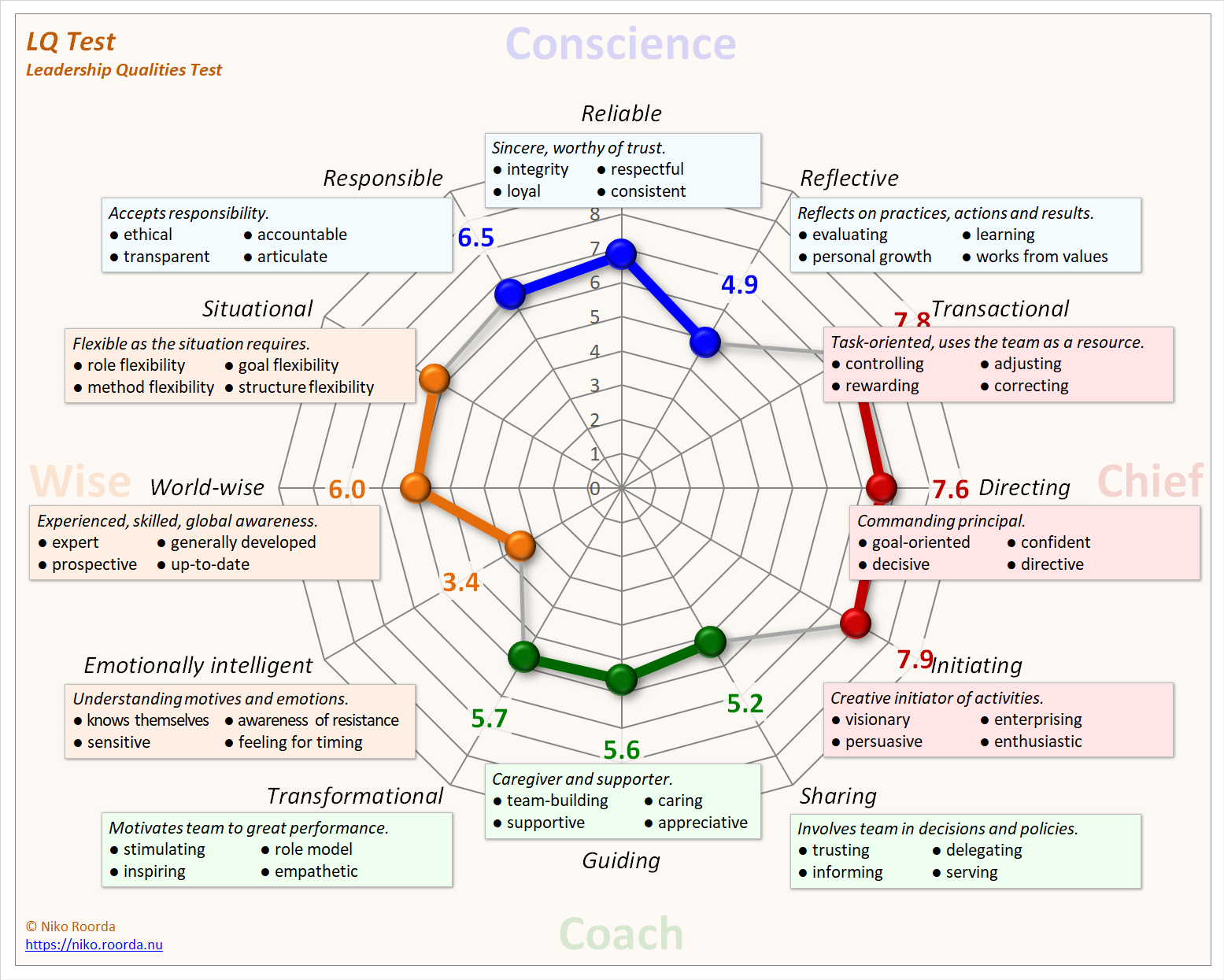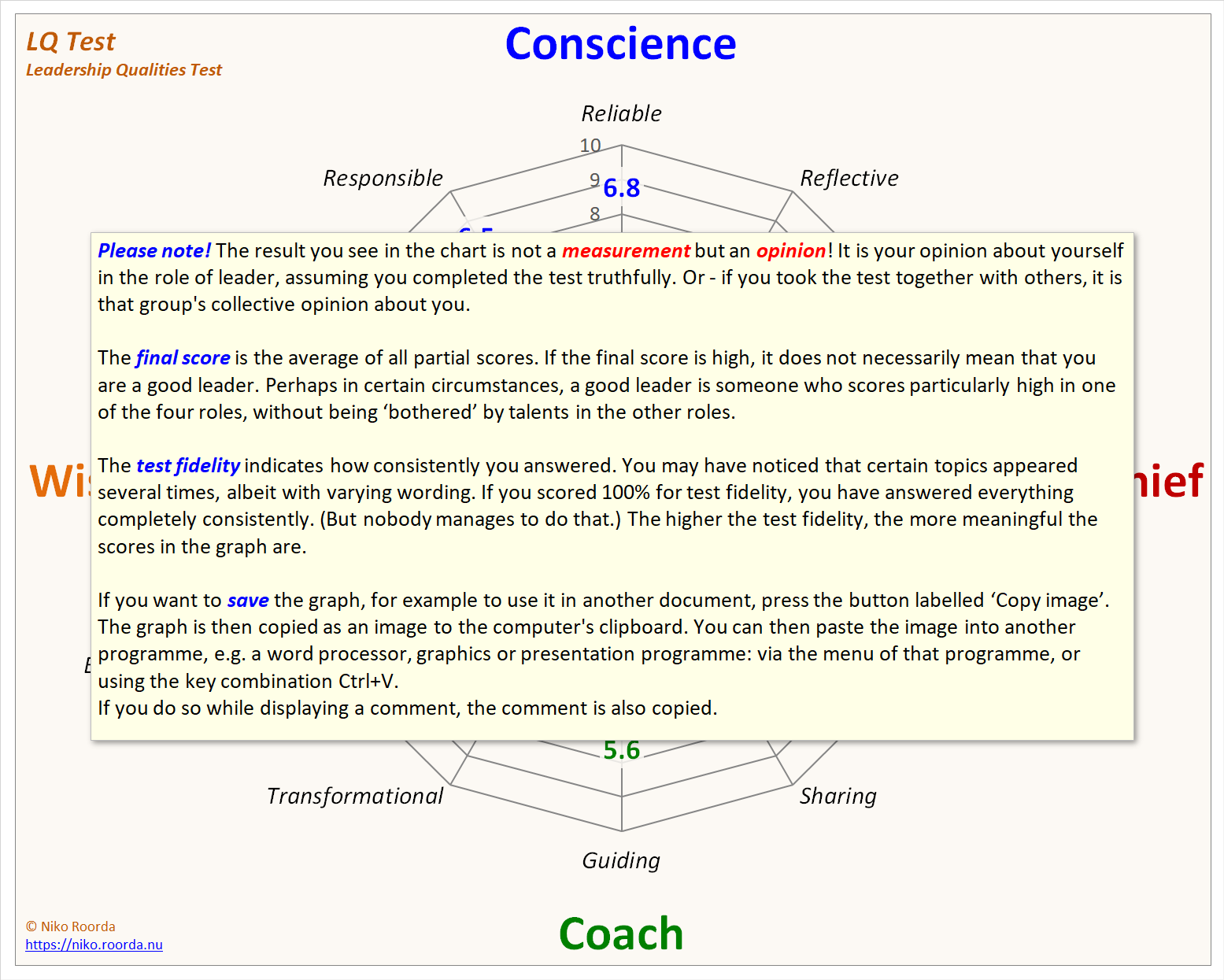LQ Test: Leadership Qualities Test |
> Skip the German pages, go directly to the general accessories of Fundamentals in all its three editions: |
The LQ Test is intended as a tool for three books, and is designed by the author:
- the English book Fundamentals of Sustainable Development, edition 2025;
- the Dutch book Basisboek Duurzame Ontwikkeling, editie 2025; and
- the German boek Grundlagen der nachhaltigen Entwicklung, Ausgabe 2025.
> The test is available in each of these languages: see also the information page in Dutch or German.
> Download the test in English, or alternatively in Dutch or German.
Purpose; Target Group
The test is designed to offer insight into who you are and how you act as a leader of a team, a department or an organisation.
(Throughout the test, the neutral term ‘team’ is used).
The test is suitable for both formal leaders (directors, managers, coordinators, teachers, etc.) and informal leaders (people to whom - by virtue of their experience, expertise, charisma - colleagues and formal leaders more or less automatically listen. If you do not lead in either way (yet), you can try to imagine, while taking the test, how you would lead if you did.
The test takes about 20 minutes.
Four roles, twelve styles
The Leadership Qualities Test distinguishes four roles. With each of the four roles, three styles of leadership can be distinguished, as the image shows.
Leaders never fulfil just one role, and certainly do not constantly employ just one of the twelve styles. Every leader exhibits a combination of these roles and styles, switching regularly. The test shows what that combination looks like for the person being tested, through a spider web diagram.

Procedure
You can complete the test on your own, and then it is a self-test.
You can also choose to fill it out in consultation with a few people who know you very well.
In that case, it is more than a self-test, because you will get immediate feedback.
Whichever approach you choose: fill in the test truthfully. Don't sugarcoat anything.
Why would you? Who would you fool, if you make reality seem prettier than it is?
The test consists of a number of statements. For each one, you examine to what extent the statement applies to you.
Behind each statement you place a number, between 1 and 5: see the picture below.

Upon completion of the test, you will receive the results in the form of a ‘spider web’ graph, accompanied by explanations.

Upon completion of the test, you will also receive a final score and a test fidelity score.

The results are explained in Explanation 3.


